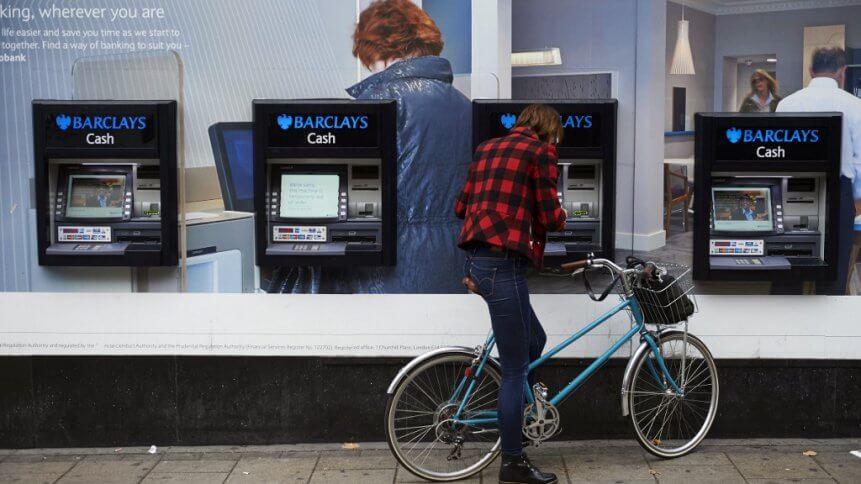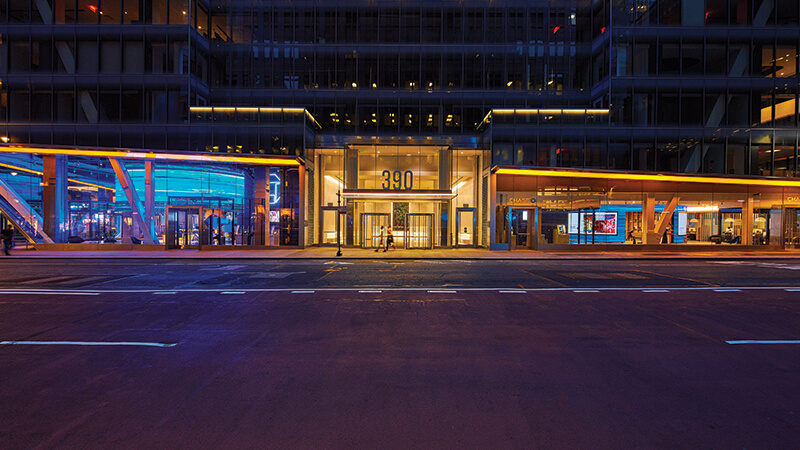How the in-branch experience could become ‘pleasingly un-bank-like’

Chances are, that if you’re reading an online-only business technology news site, you’re probably ‘savvy’ enough to be enjoying the convenience of digital solutions in other walks of life — not least, for your finances.
Online banking has transformed the financial services sector, enabling customers to access and interact with their accounts 24/7 from whatever device they please. It’s fast-evolving, offering better functionality and a more personalized service every day.
Established banks now have a fire under them to enhance their digital banking experience as new mobile-first, cloud-based challengers continue to disrupt the market. Not only that, but the demands of the pandemic have led to a surge in users to online banking channels for all their financial needs. By 2026, the global online banking market is expected to hit a worth of US$20.5 billion, more than double last year’s figure of US$9.1 billion.
All this would suggest that banking is poised to go fully digital. If that’s the case, what will happen to physical, bricks-and-mortar branches? Are we facing an end to long waits in line and filling out paper forms?
The answer, so far, seems to be yes and no. There’s no question a tidal shift of consumers to evermore advanced online customer experiences will siphon large amounts of footfall from branches. But, at the same time, many consumers still crave a personal service and many are not yet ready to cut the cord from physical branches altogether, especially when it comes to more complex tasks like applying for a loan.
Traditional banks with established branches have something that new challengers don’t — it would be unwise to shut their doors for good. But they must seek to reevaluate the purpose of these spaces for a new age of banking, in much the same way as established retailers are leveraging their storefronts for multichannel, experiential retail — something their newer online-only counterparts can’t offer.
Chase Bank is continuing to invest in physical branches, and last year unveiled a new flagship branch in Manhatten whose experience is indicative of the direction that in-branch banking is headed. The bank is one of the firm’s largest and most innovative branches, integrating the latest digital technology, amenities and design elements to create a unique and modern space for customers and employees.

Chase Bank’s Manhatten flagship branch. Source: Chase
The 12,500 square-foot, high-tech space is equipped with free wi-fi and charging stations for customers and employees. The flagship branch also has “a modernized workspace for bankers with online tablets, a digital advice bar, and enhanced ATMs that can perform 80% of transactions.”
‘Pleasingly un-bank-like’
Chase took the project further by hosting after-hours community events and discussions. Their “Chase Chats” invite experts, special guests, and bankers to speak on topics that matter most to customers, ranging from retirement planning best practices to starting a small business. The branch held discussions featuring celebrities including the bank’s brand ambassador, retired NASA Astronaut, Scott Kelly. More recently, Chase Chats have taken to the stage to webcasts, continuing to invite special guests to speak on finance-related topics.
Calling all students: @serenawilliams wants to help you get financially fit! We’re sitting down with her to talk about planning for the unexpected, lifelong money habits, and knowing your worth. Tune in on Twitter August 20th at 3pm EST and visit https://t.co/P9My2Pbskw for more. pic.twitter.com/SGuNqCieAJ
— Chase (@Chase) August 17, 2020
“Our branches are about people, from our customers and employees to the communities they serve,” said Thasunda Brown Duckett, CEO of Chase Consumer Banking, said in an official statement. “This branch is more than a place for banking. It’s a place to bring the community together to have money conversations that are important to our customers.”
The UK bank Halifax took a similar community-first approach for its branch on Oxford Street in London. The three-story building features a coffee shop and designated areas for children’s saving and travel while offering customers access to free events, such as code club and advice on purchasing real estate for first-time buyers.
Other banks are rebranding the concept of the branch altogether. Virgin Money, for example, began calling its branches Virgin Money ‘stores’ in 2018, making them spaces for co-working, and even hosting concerts for emerging talent.
“Having trialed a couple of music events over the past year in a few locations, we know the public find it pleasingly un-bank-like to be welcomed into our stores in the evening, handed a drink and invited to listen to great local music,” said Louise Hodges, head of consumer communications at Virgin Money.
However, the evolution of certain ‘stores’ came amid the closure of Virgin Money of some 22 branches as a direct result of drops in footfall.
Rather than trying to breathe new life into old branches, Swedish bank Handelsbanken instead went back to basics to emphasize the close relationship between the firm’s staff and customers. Rather than continuing to pay expensive rent on the high street, the bank has reduced costs of operation at its Holborn branch in London by moving its branch to an upper floor of a multi-office building.
The branch is described as an ‘empty shell’ devoid of ATMs or tills, the focus is on personal relationships and a familiar service that can’t be achieved online: “Should they need to, customers can pop into their local branch and have a chat with their bank manager, whom they know personally,” said Jon Croney, branch manager at Handelsbanken Holborn.
The impact of the coronavirus outbreak has also pushed banks globally to adapt their physical branches. Recently, Malaysia-based Alliance Bank developed a “branch-in-a-tablet” that enables users to open a savings account, activate their online banking account or debit card, all within 15 to 20 minutes from a tablet. Meanwhile, enterprise clients can open a business account digitally via the tablet in a single visit instead of returning another day to complete the application. The project has resulted in bank branches reducing account opening times by 70%.
YOU MIGHT LIKE

Standard Chartered becomes cloud-first bank with Azure
However, a more recent survey by data analytics company J.D. Power found that a reduced number of customers visited bank branches to complete transactions. The survey conducted in July found that less than 10% of customers carried out a transaction inside a bank branch in the past week, while 29% used a drive-through, and 29% used a mobile check deposit, and 33% used an ATM.
The global health crisis has led to banks changing the way they operate their branches and also how their workforce operates. At the same time, customers are forming new habits and preferences for their banking activities. The coronavirus outbreak triggered an irreversible impact that may see digital banking becoming the dominant channel, but the in-branch experience can remain valuable, and banks must ensure it continues to evolve and innovate this channel alongside.









